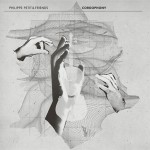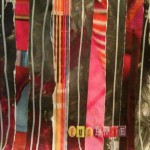PHILIPPE PETIT & FRIENDS: Cordophony (Home Normal) / PHILIPPE PETIT: Eugenie (Alrealon Musique)
By themilkman
Posted on May 23rd 2012 01:44 am
Filed in Albums,Singles/EPs | Tags: Alrealon Musique, Home Normal, Philippe Petit
Comments (0)
PHILIPPE PETIT & FRIENDS
Cordophony
HOMEN035
Home Normal 2012
13 Tracks. 45mins32secs
PHILIPPE PETIT
Eugenie
ALRN029
Alrealon Musique 2012
04 Tracks. 24mins08secs
Cordophony
![]() Amazon UK: DLD US: DLD Boomkat: CD | DLD iTunes: DLD
Amazon UK: DLD US: DLD Boomkat: CD | DLD iTunes: DLD
Eugenie
![]() Amazon UK: DLD US: DLD iTunes: DLD
Amazon UK: DLD US: DLD iTunes: DLD
The dust has barely had the time to settle on the second proper Strings Of Consciousness installment that the unstoppable monsieur Petit is back with a handful of releases for Aagoo, Home Normal, Alealon and Utech to be released over the coming weeks.
Marseille-based Philippe Petit is as much a curator as he is a composer, sound artist and musician, and his records have become extraordinary meeting points for artists of all horizons. Equally, the music he produces ranges from abstract post rock to intense soundscaping to post-classical and beyond. This is precisely where Cordophony stands. Taking its name from the French word ‘cordophone’, which describes any type of musical instruments which sound is produced from strings, encompassing anything from violin, cello or guitar to piano, harpsichord or harp for instance, and published on the ever excellent Home Normal, this album is primarily, although not exclusively, based on string instruments, which Petit then processed and assembled into the thirteen pieces collected here. Beside his Strings Of Consciousness acolytes Hervé Vincenti and Raphaelle Rinaudo, Petit has called upon the services from musicians as diverse as Bela Emerson, Rob Ellis, Nils Frahm, Reinhold Friedl, Alexander Bruck, Adrian Klumpes or Aiden Baker to help him flesh out this somewhat ambitious piece of work.
Made up of short sonic vignettes rather than extensive compositions, Cordophony is a forever changing set of moods, ambiences, sounds, noises, fragments of melodies and flitting sequences which slowly build up over the course of the whole record to make up a somewhat stark and cinematic soundtrack. As usual, Petit is very much at the heart of the project, yet he is a generous host and often lets his guests step up to the fore, if at times in heavily processed form. The overall tone of the album is clearly influenced by various strands of orchestral music, from baroque to avant-guarde, but this is only part of the make up of Cordophony; elements of folk, pop and film music also find their way into the fabric of this work and open it up vastly.
Petit’s role is very much to bring all these disparate components together and arrange them into a coherent whole. Despite clocking at barely three minutes in most cases, these pieces are particularly intense and contrasted. Indeed, some compositions seem to be made of tiny sonic sequences assembled at random with complete disregard for any continuity. This is very much the case with opening piece Gli Occhi Freddi Della Vendetta which continuously changes aspect through its course, its only running thread being Reinhold Friedl’s prepared piano. Later, Many-Minds In Many-Worlds shifts between the beautiful and the disturbing, and Crépuscule accumulates screeching string work, acoustic guitar, mechanical rhythmic patterns and environmental noises.
Contrasting with these are more delicate pieces fueled by touches of acoustic guitars (Eugenia) or piano (The Modern Dance For The Advanced In Age, A Lullaby). The former can at first appear like a refreshing pause after the ardent effusions of Gli Occhi Freddi Della Vendetta, but its progression is somewhat impaired by its occasional dissonances. Surprisingly, although partially built from prepared piano, the latter two appear wonderfully dreamy and light and prove an exquisite prelude to the more epic closing piece, Oneiromancy: A Dream With A View. Here, Petit and his contributors move from the gently cinematic textures of the first half of the piece, albeit tainted with gritty found sounds and squeezed balloons, to the almost tribal rhythm and sweeping guitars found on the last section of the piece.
Although more varied than Cordophony, Petit’s four-track EP Eugenie for Alrealon could appear as an extension of the album, especially with An Air Of Intrigue, recorded with Bela Emerson and Alexander Bruck, and Pyramid Of The Moon, which features violinist Jenny Hames and guitarist Paul J. Rogers. The former is a particularly intricate miniature which collates various drone forms, various percussive instruments and field recordings, while the latter is a more melodic piece where Hames’s violin is over-layered into a thick sonic cloud for a while, but when it progressively dissipate, a gentle melody on an acoustic guitar gives the piece a welcome pastoral close. The remaining two pieces are much more abstract in nature, but while Clapoutique is quite a dense and ominous composition, Magma From The Aquarium sees Petit experiment with a series of abrasive sets of distortions which are placed one after the other and left to develop over the whole of the second side.
Philippe Petit’s work is vast and far reaching, and despite the rather impressive scope of these two recordings, they only cover a fraction of it. Yet, with Cordophony, Petit has produced one of his most ambitious and complex record to date, and, although much more succinct, Eugenie proves a worthy companion.
Cordophony: 4.8/5 / Eugenie: 4.6/5
![]() Philippe Petit | Home Normal | Alrealon Musique
Philippe Petit | Home Normal | Alrealon Musique
Cordophony
![]() Amazon UK: DLD US: DLD Boomkat: CD | DLD iTunes: DLD
Amazon UK: DLD US: DLD Boomkat: CD | DLD iTunes: DLD
Eugenie
![]() Amazon UK: DLD US: DLD iTunes: DLD
Amazon UK: DLD US: DLD iTunes: DLD
Filed in Albums,Singles/EPs | Tags: Alrealon Musique, Home Normal, Philippe Petit
Comments (0)




